
On the outskirts of the farm are the male sheep and young cows. If you've never heard a male sheep bleat, then you should know it is not what you heard from your childhood Speak-n-Say. In fact, if they did put male sheep sounds in that toy, then most children would probably be afraid of sheep and desperately cry out for a silence of the lambs. The noise sounds more like a dry heave than anything. Anyways, what is important to take away from the picture is that all of the animals are free to roam a wide swath of land at their leisure.
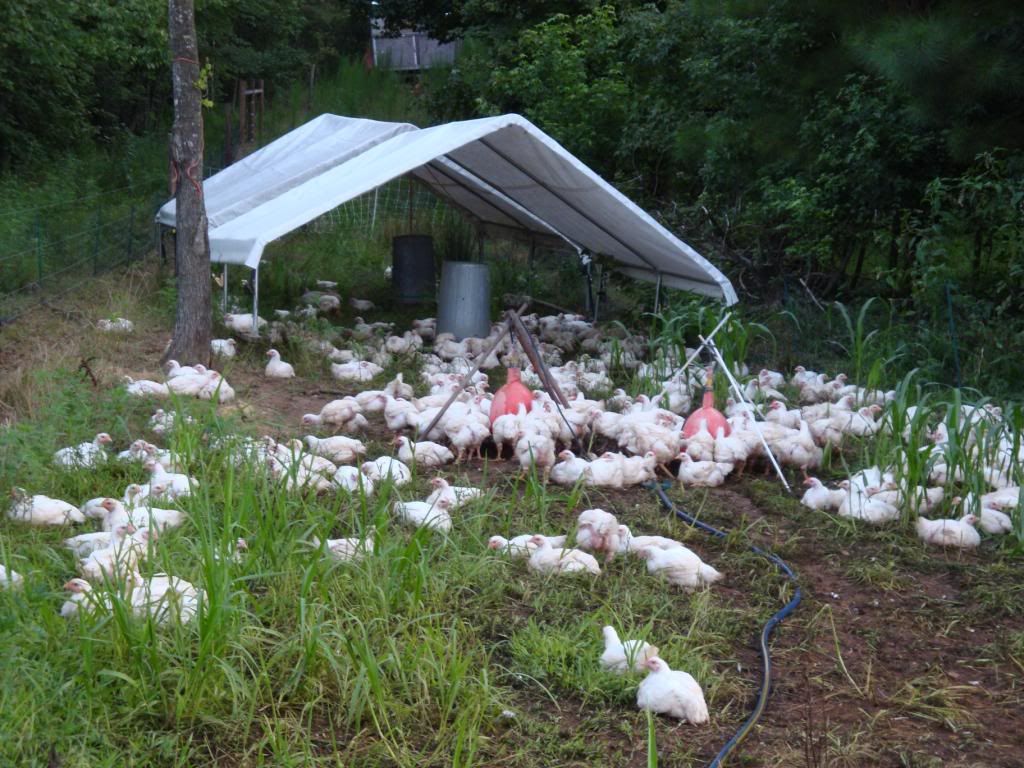
Chickens come in two flavors on the farm (no, not lemon-pepper and BBQ). This first type of poultry is the broiler hen. These are your meat chickens. No hormones are used to make them more plump. Generations of breeding has yielded hens whose muscles grow faster than their feathers, so you may notice some bald spots on these ladies. But this is as natural as you can hope for while still having some meat to sink your teeth into.
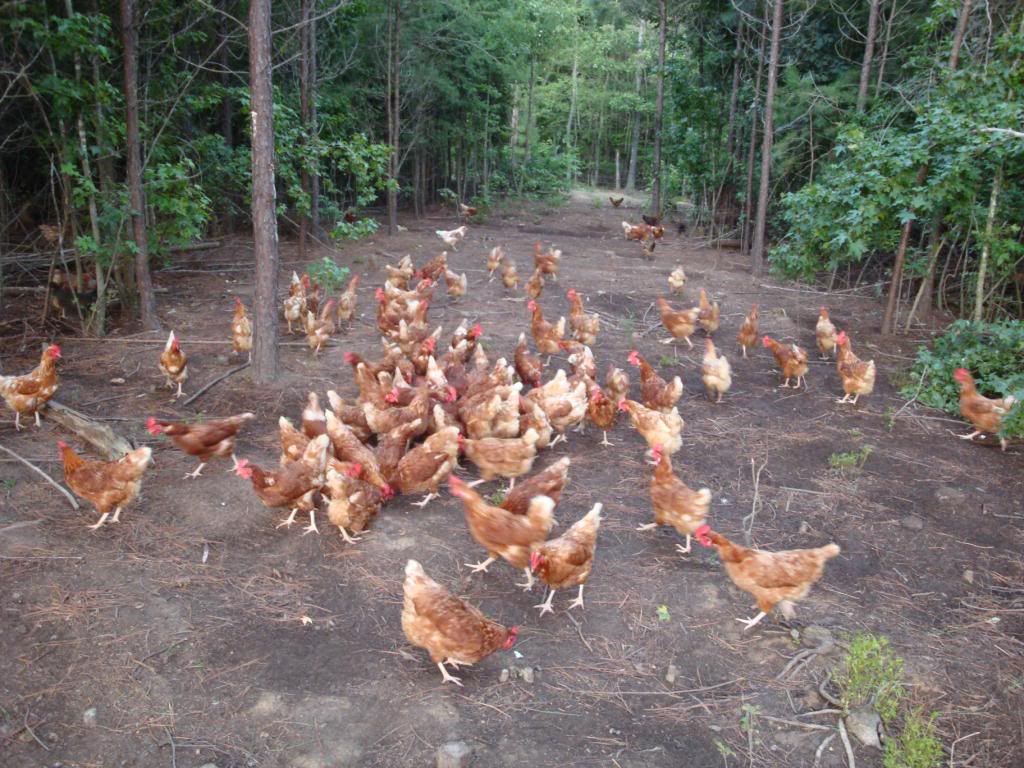
The other hen running around the farm is the egg-laying variety. They actually have a few different breeds, though I cannot remember their names for the life of me. Some even lay green eggs! If you have a Dr. Seuss breakfast you've been dying to make, this is your chance. The other point to be made about the chickens is that they are part of the farm's practice of rotating the usage of its land. You can use pigs to clear the land and chickens to fertilize it and prepare it for planting crops. The chickens roost in mobile coops that can be easily moved around the farm.

Pigs will always hold a special place in my heart. After working with neonatal piglets for a little over 3 years, I find these oikers adorable. These are obviously the big brothers to the little guys I'm used to, but they're still pretty darn cute.
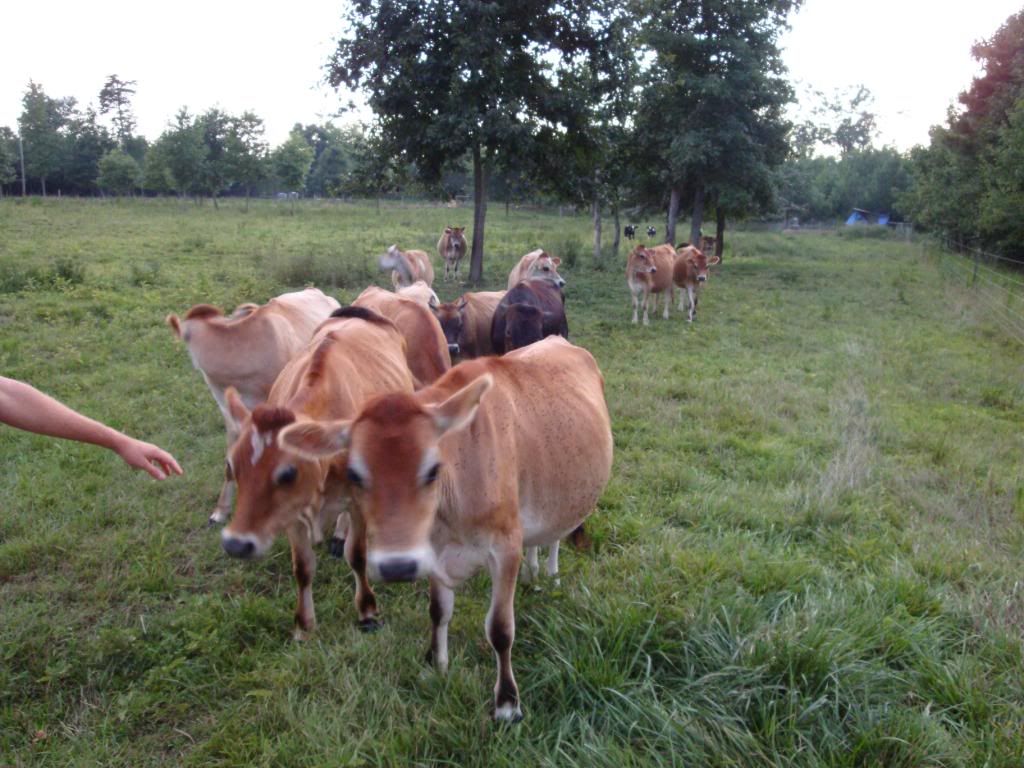
To finish out the menagerie, we saw full grown cows. I believe our tour guide said that some of the cows are used by Chapel Hill Creamery. I've had a couple of their cheeses and they are quite fantastic. Cattle tip of the tour: if a cow attempts to assert its dominance, punch it in the nose. Isn't that what you're supposed to do with sharks?


So what does all of that land preparation yield? Innumerable crops that I won't even be able to cover completely. Pictured above are Christmas lima beans and various squashes (the Frankensquash are actually called zephyr squash come to find out). We had the chance to sample some fresh arugula and cherry tomatoes as well. And below you can see some delicious food made from farm-fresh products.
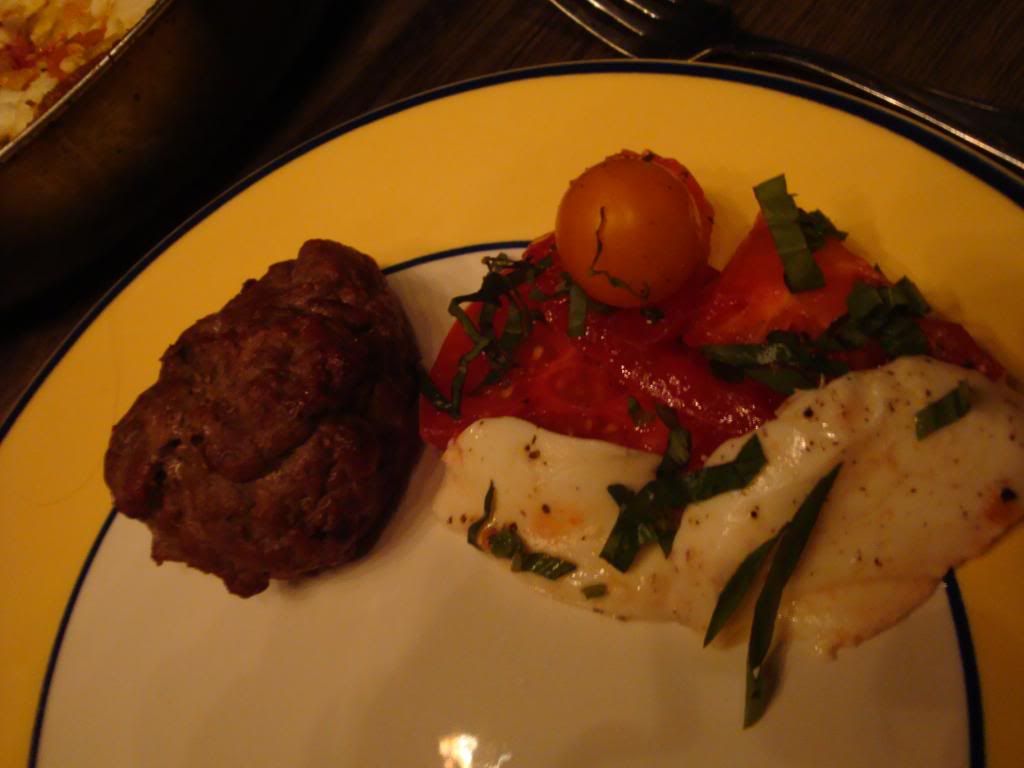
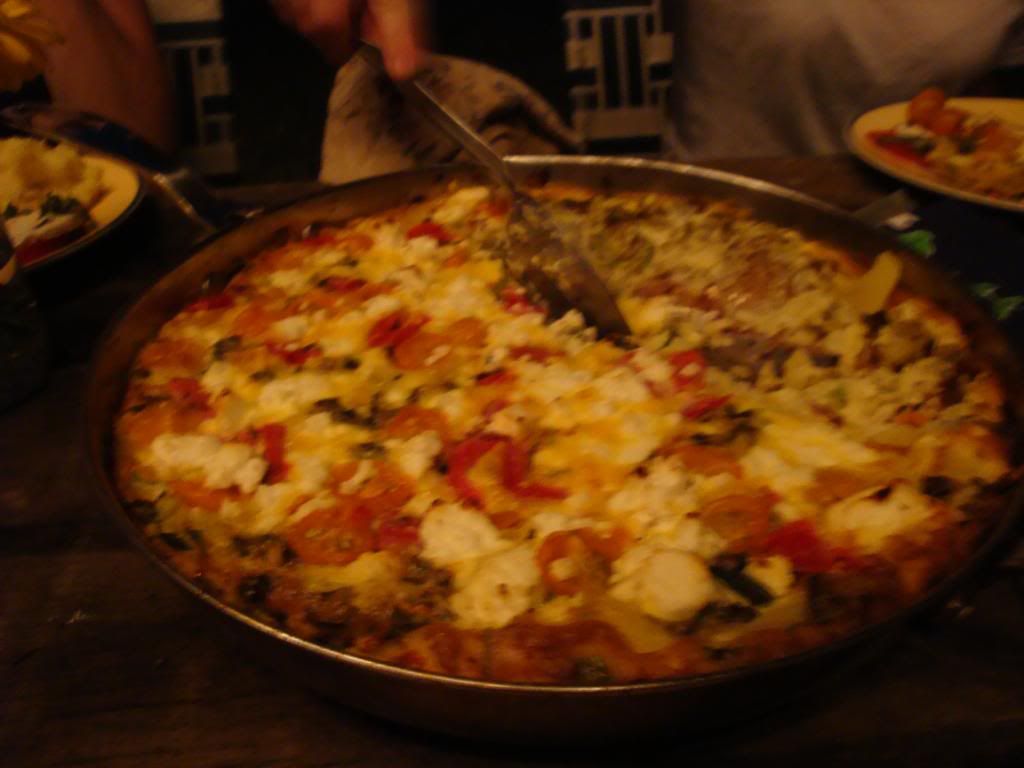
Dinner for the evening was about 90% ingredients directly from the farm. We had a caprese salad featuring some of the tastiest tomatoes of the season. The burger you see on the plate is made of venison from local NC deer. This was my first time tasting venison and it was pretty good. They say venison can be cut with pork to up the fat content, which could be good because venison is a very lean meet (think of how a deer looks in comparison to a pig). Since the meat was grilled, it adopted a smoky, almost jerky-like flavor. Chock up another animal for my meat reportoir. Lastly, how do you eat an omelet for dinner without sounding like a total loser? Make the omelet huge and call it a frittata. This frittata had tomato, potato, cheese, basil, onions and perhaps a few more vegetables that I cannot remember because they blended into the wonderful deliciousness. The ingredients have the potential to stand alone, but these were done right so that it all came together superbly. I want to thank my hosts and tour guides for the awesome opportunity to see the inner workings of Fickle Creek Farm. They will be offering more farm tours this spring and you can find their produce at many local restaurants and farmers' markets.
No comments:
Post a Comment